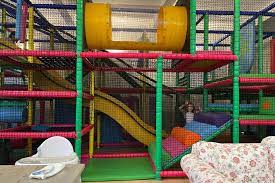
Unleashing Fun and Adventure: Exploring Soft Play Areas for Kids in the UK
Soft Play Areas: Exploring the World of Fun and Adventure
Soft play areas have become increasingly popular destinations for families seeking a safe and enjoyable environment for their children to play, learn, and socialize. These indoor playgrounds are specially designed with young ones in mind, offering a range of exciting activities that promote physical development, creativity, and social interaction.
What exactly are soft play areas? Picture a colourful wonderland filled with padded floors, bouncy castles, ball pits, climbing frames, slides, and tunnels. These soft surfaces are carefully constructed to minimize the risk of injury while providing endless opportunities for exploration and fun.
One of the key benefits of soft play areas is their ability to support children’s physical development. As they crawl through tunnels or climb up structures, little ones improve their coordination, balance, and motor skills. From navigating obstacles to jumping on inflatable structures, these activities help build strength and agility in a safe environment.
In addition to physical benefits, soft play areas also stimulate children’s imagination and creativity. Many play zones feature themed sections that transport kids into different worlds – from jungles to space stations or even magical kingdoms. This encourages imaginative play as children create stories and scenarios within these immersive settings.
Another advantage of soft play areas is their ability to foster social skills. Children have the opportunity to interact with others in a playful setting, learning important skills such as sharing, taking turns, cooperation, and communication. Soft play areas often host group activities or structured games that encourage teamwork and collaboration among young participants.
Safety is paramount in soft play areas. The equipment is designed with rounded edges and covered in soft padding to minimize the risk of bumps or bruises. Additionally, many venues have dedicated staff members who monitor the area closely to ensure everyone’s safety while providing assistance when needed.
Soft play areas are not just for toddlers; they cater to various age groups with designated zones suitable for different developmental stages. This allows siblings of different ages to enjoy their playtime together, creating a sense of inclusivity and family bonding.
These indoor playgrounds are not only popular for everyday play but also for hosting birthday parties and special events. Many soft play areas offer party packages that include exclusive access to the facility, dedicated party hosts, decorations, and even food options. It’s a stress-free way for parents to celebrate their child’s special day while ensuring everyone has a fantastic time.
In conclusion, soft play areas provide a world of fun and adventure for children. They offer a safe and stimulating environment where kids can develop physical skills, unleash their creativity, and build social connections. With their focus on safety, inclusivity, and endless entertainment possibilities, it’s no wonder that soft play areas have become go-to destinations for families seeking quality playtime experiences.
So next time you’re looking for an exciting outing with your little ones or planning a memorable celebration, consider visiting a soft play area near you. Get ready to dive into a world of laughter, exploration, and boundless joy!
Frequently Asked Questions About Soft Play Areas in English (UK)
- What is the meaning of soft play?
- How does soft play help a child’s development?
- What is the world’s largest soft play area?
- What is sensory soft play?
What is the meaning of soft play?
The term “soft play” refers to a type of indoor playground or play area specifically designed for young children. Soft play areas are constructed using soft, padded materials such as foam, rubber, or fabric to create a safe and cushioned environment for children to play and explore. The focus of soft play is on providing a secure space where kids can engage in physical activities, climb, slide, jump, and interact with various sensory elements without the risk of injury. These areas often feature structures like climbing frames, ball pits, tunnels, slides, and other interactive elements that promote active play and stimulate children’s imagination and motor skills development. Soft play areas are typically found in dedicated indoor play centers or family entertainment venues where children can have fun while parents or caregivers can relax in a supervised setting.
How does soft play help a child’s development?
Soft play areas play a crucial role in supporting a child’s overall development. Here are some ways in which soft play can benefit children:
- Physical Development: Soft play areas provide a safe and stimulating environment for children to engage in physical activities. Crawling through tunnels, climbing structures, sliding down slides, and jumping on inflatable structures all help develop motor skills, coordination, balance, and strength.
- Sensory Stimulation: Soft play areas often incorporate various textures, colors, and shapes that engage children’s senses. This sensory stimulation helps promote cognitive development as children explore different tactile sensations and visual stimuli.
- Social Skills: Soft play areas encourage social interaction among children. Kids have the opportunity to meet and play with others their age, promoting communication skills, sharing, taking turns, cooperation, and teamwork. These social interactions help develop important social skills that are essential for future relationships.
- Imaginative Play: Many soft play areas feature themed sections that spark children’s imagination and creativity. By immersing themselves in imaginative scenarios like pretending to be pirates or exploring a jungle, children develop storytelling abilities, problem-solving skills, and critical thinking.
- Emotional Development: Soft play areas provide a space where children can freely express themselves while having fun. Engaging in physical activities releases endorphins that contribute to positive emotional well-being and can help reduce stress or anxiety.
- Cognitive Development: Soft play areas often incorporate puzzles or interactive games that challenge children’s cognitive abilities. These activities promote problem-solving skills, spatial awareness, memory retention, and logical thinking.
- Confidence Building: As children navigate through soft play structures or successfully complete challenges within the area, they gain a sense of accomplishment and build self-confidence. Overcoming obstacles or trying new activities fosters resilience and encourages them to take on new challenges outside the soft play environment as well.
- Inclusivity: Soft play areas are designed to accommodate different age groups and abilities. This inclusivity allows children of various backgrounds and developmental stages to interact, learn from one another, and develop empathy and understanding.
It’s important to note that while soft play areas provide valuable developmental benefits, they should always be supervised by responsible adults to ensure safety and guide children in appropriate play behaviors. By offering a wide range of physical, social, cognitive, and emotional experiences, soft play areas contribute significantly to a child’s holistic development.
What is the world’s largest soft play area?
The world’s largest soft play area is located in the United Kingdom. It is called “Diggerland” and is situated in Kent, England. While Diggerland is primarily known for its construction-themed attractions and rides, it also boasts an expansive soft play area that covers a significant portion of its facility. With multiple levels, slides, tunnels, and padded structures, this soft play area offers children a vast space to explore and have fun. Diggerland’s commitment to providing a memorable play experience has earned it the title of the world’s largest soft play area.
What is sensory soft play?
Sensory soft play refers to a type of play area specifically designed to engage and stimulate the senses of children, particularly those with sensory processing difficulties or special needs. These play spaces are created with the intention of providing a therapeutic and inclusive environment where children can explore, learn, and develop their sensory skills.
In sensory soft play areas, you will find a variety of equipment and activities that target different sensory experiences. This includes tactile elements such as textured surfaces or materials that children can touch and feel. There may be areas with different textures like soft fabrics, squishy toys, or surfaces with bumps and ridges.
Visual stimulation is also an important aspect of sensory soft play. The use of vibrant colours, contrasting patterns, and interactive lighting can help capture children’s attention and enhance their visual perception skills. Some areas may have projected images or sensory walls that respond to touch or movement.
Auditory stimuli are incorporated into sensory soft play areas as well. There might be musical toys, sound-making devices, or interactive panels that produce various sounds when activated. These elements help develop auditory processing skills while providing an enjoyable experience for children.
Sensory soft play areas often include elements that promote vestibular stimulation – the sense of balance and spatial awareness. Swings, rocking platforms, or gentle motion devices can provide opportunities for children to engage in controlled movement, helping them improve their balance and coordination.
Furthermore, these spaces may incorporate proprioceptive activities that focus on deep pressure input to help regulate the body’s sense of position and movement. This can involve climbing structures or tunnels that provide resistance as children move through them.
The primary goal of sensory soft play is to create a safe environment where children can explore their senses at their own pace. It aims to support their sensory integration by offering controlled exposure to various stimuli in a playful setting. By engaging in these activities regularly, children may improve their ability to process sensory information effectively.
Sensory soft play areas are often found in specialized centres, therapy clinics, or inclusive play spaces that cater to children with sensory processing difficulties. However, they can also be beneficial for all children as they provide a unique and engaging play experience that promotes sensory exploration and development.
In summary, sensory soft play is a form of play area designed to stimulate and engage children’s senses. It offers a range of activities that target tactile, visual, auditory, vestibular, and proprioceptive senses. By providing a controlled sensory environment, these spaces aim to support children’s sensory integration and development while offering an enjoyable and inclusive play experience.



